In the 1960s, a new comprehensive discipline, bionics, was established internationally. It was based on biology, electronics, biophysics, cybernetics, ergonomics, mathematics, psychology, and automation technology. Using electronics and mechanical techniques to study biological structures, simulate the process of energy conversion and information flow, and achieve the goal of improving and creating new automatic control devices.
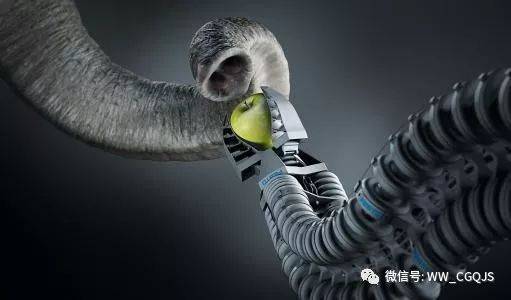
Biomimetic sensors design and improve sensors and processes by studying and utilizing the molecules and structures of living organisms, giving sensors the unique properties of certain organisms. Most of his research work is interdisciplinary, involving not only basic subjects such as physics, chemistry and biology, but also specialized disciplines such as materials science, electrical engineering and computer science.
The goal of biomimetic sensor research is to develop alternatives to human sensory organs, which are characterized by the ability to simulate certain biological functions, work like human sensory organs, send out information, and respond. Its applications cover a wide range of applications in the diagnosis and repair of human receptors in biomedicine, intelligent robotics, food, environment, air pollution monitoring, military safety, chemical and biological weapons, and anti-terrorism. For example, artificial eye, artificial ear, artificial nose, artificial tongue and artificial skin with biomimetic function are used for repair and replacement of human receptor damage; electronic nose and electronic tongue for on-site detection and identification of food and environmental quality. In chemical and biological warfare, biomimetic sensors can quickly monitor the bacteria they suspect, allowing people to detect germs as early as possible. In future small, micro and even nano-robots, small machine insects such as bees, butterflies and even cockroaches will be equipped with numerous biomimetic sensors.
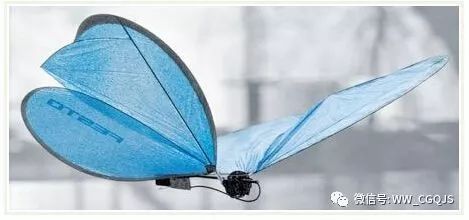
In recent years, with the rapid development of biomedical and microelectronic processing technology and the continuous improvement of human quality of life, the use of bionic technology to develop various artificial organs for damage repair with sensory function has been developed. International research on biomimetic sensors begins with the detection and identification of physical quantities, especially in the field of artificial vision, artificial hearing and artificial touch. With the rapid development of life sciences and artificial intelligence research, it is technically possible to explore and imitate the olfactory and gustatory functions of animals and humans. At the same time, with the rapid analysis and detection of body odor and body fluids in the biomedical field, The demand for trace and trace element detection is growing, and there is an increasing demand for rapid analytical diagnostic instruments such as electronic noses and electronic tongues.
The definition and working principle of bionic sensor
The biomimetic sensor is a new type of sensor that adopts a new detection principle. It is composed of immobilized cells, enzymes or other biologically active substances combined with transducers. Based on biological principles, it can be designed to sense the test object and follow A device or device that regularly converts and outputs available signals is a new type of sensor that adopts a new detection principle, consisting of a sensitive component and a conversion component, and is supplemented by a signal adjustment circuit or a power supply. This kind of sensor is a new type of information technology developed by biomedicine and electronics and engineering in recent years.
The following figure shows the block diagram of the research model of bionic sensor technology:
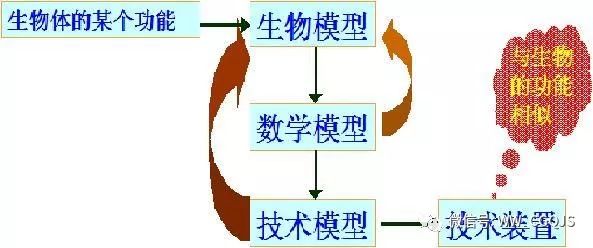
Classification of bionic sensors
In biomimetic sensors, they are often divided into visual sensors, olfactory sensors, auditory sensors, taste sensors, tactile sensors, proximity sensors, force sensors and sliding sensors. Biomimetic sensors can be classified according to the medium used: enzyme sensors, microbial sensors, cell sensors, tissue sensors, and the like.
Olfactory bionic sensor
We know that animals use a sensitive nose to smell a variety of different gases and respond accordingly. Although there are only about 1000 gas-receiving cell groups on the inner wall of our nasal cavity, it can distinguish thousands of different odors (the olfactory people can smell more than 4,000 kinds of gases, smell) Sensitive people can smell more than 10,000 gases). Recent research has shown that the production of olfaction is the result of a combination of multiple olfactory cells to "detect" an odor. Each of the different combinations perceives a different scent, and because of the variety of combinations, the animal can discern a large number of different odors. At present, the research trend of bionic olfaction is to use gas sensors with cross-reaction to form a gas sensor array of a certain scale to extract information from different gases, and then transfer these large and complex data to the computer for pattern discrimination.
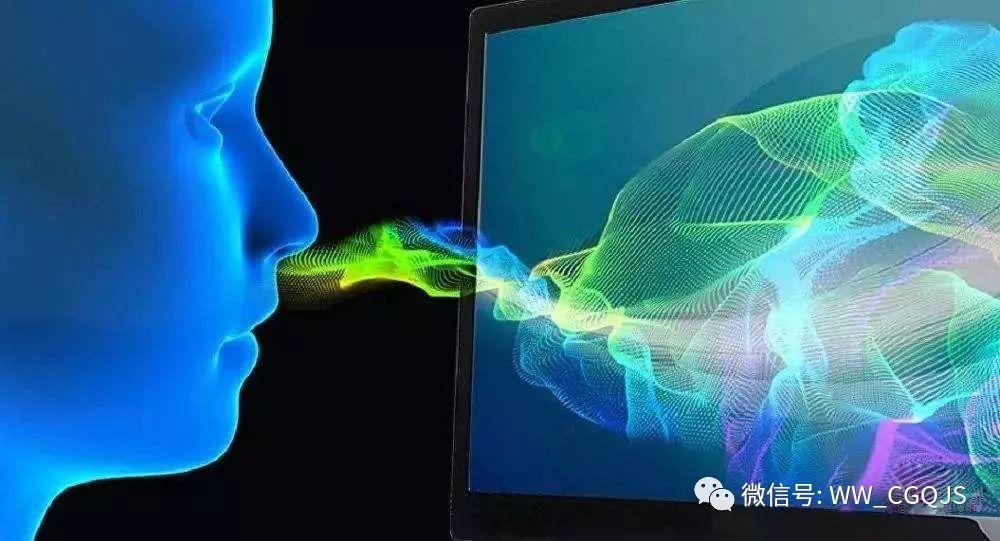
Many models have been established for the sensitive mechanism of olfaction, but the details are still in the process of exploration. International research on smell and taste began in the 1960s. On the one hand, biologists, neurophysiologists, and chemists have long explored and studied the mechanisms of olfactory and gustatory nerve conduction, and presented numerous ideas, models, and experimental analyses, such as the neurophysiologist Freeman at the University of MIT in the United States. Professors have studied the olfactory model for decades. On the other hand, scholars engaged in engineering such as analytical chemistry, electronics, and instrument science have extensively researched and researched instruments for gas and ion sensors, and have developed analytical instruments with olfactory and taste functions in many fields. Therefore, there are many kinds of sensors and analytical instruments related to gas detection in the world, but most of the electronic noses with biomimetic functions are still in the laboratory stage.
Biological olfactory mechanism
The sense of smell is vital to the survival of animals. It is an important source of information for identifying food, choosing a spouse, marking territory and avoiding enemies. Other sensory systems cannot be replaced. Mammalian olfactory perception is accomplished by two parts that are anatomically and functionally independent, namely the vomeronasal system and the main olfactory system. The former mainly receives the stimulation of pheromones, causing changes in the body's secretions, triggering a series of reproductive and social behaviors.
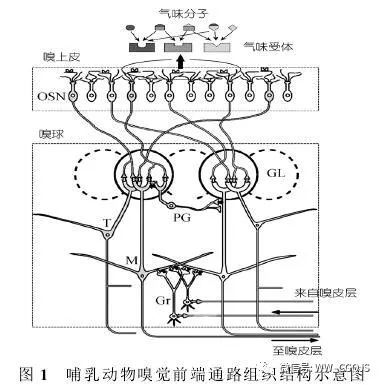
The odor in nature is usually a mixture of odorants of many different structures and properties, and the body feels the combined effect of their interaction. The olfactory receptor is located in the upper olfactory epithelium of the nasal cavity. It is mainly composed of olfactory neurons (OSN), supporting cells and basal cells. The olfactory neurons are bipolar cells, and the dendrites reach the surface of the olfactory epithelium and become round and round. And emit dozens of cilia into the surface mucus. There is an odor receptor on the plasma membrane of cilia, which has seven helical transmembrane structures in the amino acid sequence and belongs to the G protein coupled receptor. The odorant receptor gene is a superfamily with a large number of members, but each olfactory neuron expresses only one of the receptor genes. There are four independent spatial regions in the olfactory epithelium. The odorant receptors with high homology to the amino acid sequence tend to be distributed in the same region, but the olfactory neurons with different odorant receptors in a specific region are randomly distributed to enhance the sniffing. Sensitivity in all directions. Odor molecules and receptors act in a coordination mode with certain chemical functional groups, so that the same odorant receptor can be stimulated by a variety of different odor molecules, or an odor molecule can excite several different olfactory neurons. The characteristics of "single expression, partition arrangement, random distribution, cross-coordination" allow the body to complete the initial selectivity and preliminary spatial coding of different information molecules in the olfactory epithelium.
Bionic olfactory system
The electronic nose is inspired by the principle of biological olfaction. It combines modern sensing technology, electronic technology and pattern recognition technology to create a novel biomimetic detection instrument. Usually, the volatile odor of the sample reacts with multiple gas sensors in the array. Converting the chemical signal into an electrical signal, and then obtaining and enhancing the comprehensive fingerprint information corresponding to the sample through a series of pre-processing processes such as amplification and noise reduction conditioning, baseline calibration or normalization, and then extracting appropriate feature input to the specific The pattern recognition algorithm ultimately completes the qualitative or quantitative identification of the sample.
Compared with the structure and function of biological olfaction, the gas sensor array in the electronic nasal air chamber is equivalent to the olfactory epithelium on the nasal cavity, and the cross-sensitive chemical sensor is equivalent to the olfactory neurons sensitive to various odor molecules. The chemical information of odor is converted into electrical information; the function of pretreatment is similar to the integration and enhancement of signals in the olfactory bulb; the principle of pattern recognition, especially the artificial neural network (ANN) method, simulates the encoding and processing of cerebral cortex information to some extent. And storage and other processes.
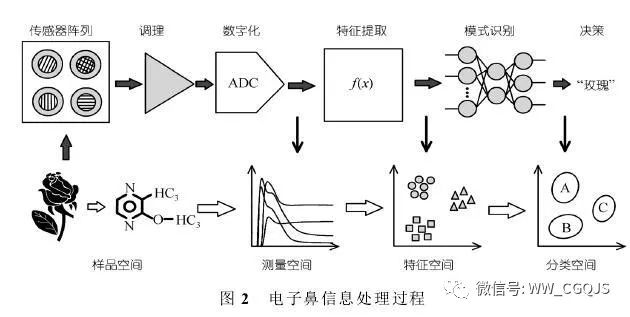
The gas sensor array realizes the conversion of odor information from the sample space to the measurement space, and is the key link of electronic nose information processing. Gas sensing sensors with different sensing principles and manufacturing processes enrich the electronic nose to obtain odor information. Commonly used are metal oxide semiconductor (MOS), quartz crystal microbalance (QCM), conductive polymer (CP), acoustic surface. Wave (SAW), etc. The sensors that construct the array should be sensitive to a wide range of odors (weak selectivity) in addition to fast response, reversible, reproducible, high sensitivity, etc., and each sensor in the array should be cross-sensitive to the same odor to ensure Get more odor information from a limited number of sensors. Generally, the amount of raw signal data acquired from the sensor array is large, and it is necessary to extract features first, and transform the mode from a higher-dimensional measurement space to a lower-dimensional feature space, and the pattern recognition process is to feature space. The process of dividing into classification space, which is the core unit of electronic nose intelligence.
The basic structure and working principle of bionic electronic nose
The bionic electronic nose is a smart electronic device designed to simulate the human olfactory system and can be applied to gas sensitive systems that measure one or more odorants in many systems. Its basic structure and working principle are as follows:
1, gas sensor array
It consists of a gas sensor with broad spectrum response, large cross sensitivity and different sensitivity to different gases. During operation, the gas sensor responds to the contacted gas and produces a certain response mode. He is equivalent to the olfactory receptor cells of the human nose.
2. Signal preprocessing unit
It pre-processes the sensor's response mode to achieve drift compensation, information compression, and reduced signal (with sample) fluctuations, completing the task of feature extraction.
3. Pattern recognition unit
The signal sent by the signal pre-processing unit is further processed to complete the qualitative and quantitative identification of the gas signal. Includes data processing analyzers, smart interpreters, and knowledge bases. He is equivalent to the human brain.
Application of bionic electronic nose in food evaluation
Fruits and vegetables are metabolized by metabolism, so the odors will be different at different stages of maturity, so the fruit's maturity can be evaluated by smelling the odor. Although people can judge the maturity of fruits and vegetables by smelling the smell of fruits and vegetables, the odor that humans can feel is limited, especially when distinguishing similar odors, the discrimination of human beings is limited. The maturity of fruits and vegetables can also be detected through some physical and chemical indicators, but the detection of these indicators will damage the integrity of fruits and vegetables. The biomimetic electronic nose technology can be used for non-destructive testing of fruit and vegetable maturity. Now the biomimetic electronic nose non-destructive testing of fruit and vegetable maturity is mainly concentrated on pears, bananas, citrus, apples and other fruits. In addition to the application of the maturity of fruits and vegetables, the bionic electronic nose can also be applied to the maturity evaluation of cheese and meat products.
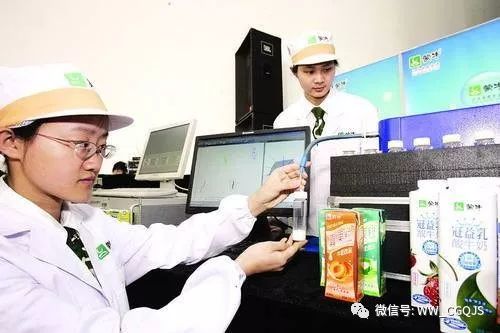
Bionic electronic nose has a lot of research on food sensory evaluation, but his practical application is not many, and there are few products put into the market. However, with the continuous development of science, technology and scientific concepts, bionic electronic nose as a door Emerging technologies will surely bring more, larger and wider applications.
Taste biomimetic sensor
Mechanism of taste sensor
The measurement of the taste chemical sensor developed in this century is the result of the selective development of ion selective electrodes. However, only a few types of such chemical sensors can be selective sensors. In the last decade, a new concept has been applied to the application of a non-selective taste sensor array and special digital signal processing methods based on pattern recognition (such as artificial neural networks, principal component analysis PCA, etc.) as electronic tongues simulating humans and creatures. It was proposed by Professor Yu.G.Vasov of Russia in 1995 and has co-authored international cooperation projects between Professors Damico of Russia and Italy. Later, Professor TOKO of Japan and others also proposed a similar electronic tongue concept.
There are about 900 taste buds, and each taste bud contains 40-60 taste cells. The size of the taste buds is about 50μm-70μm, and each taste bud is composed of supporting cells and 5-18 hair cells, and the latter is a taste receptor. Each susceptor cell has a number of microvilli protruding from the odor hole, which is the opening of the taste bud on the surface of the tongue epithelium, and the unmyelinated tip of the nerve fiber is closely wound around the susceptor cell. Each taste bud has about 50 nerve fibers, and each nerve fiber receives an average of 5 taste buds.
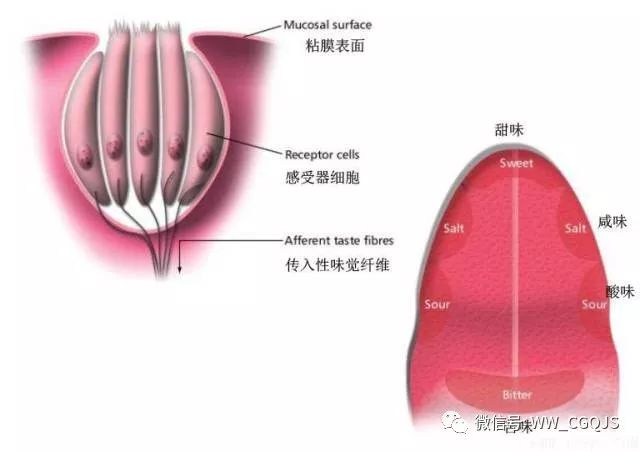
Studying the results of different taste stimuli in the electrical response caused by taste receptor cells and human nerve fibers, we have a deeper understanding of the coding rules of taste information. In recording the impulse of a single taste-transmitting fiber, it was discovered that a nerve does not respond to only one basic taste stimulus. For example, a fiber that reacts with salt reacts with acid, and a fiber that reacts with acid reacts to bitterness. This means that a taste is not simply transmitted to the center by a fiber or a group of fibers that only react to this taste. The study also found that each taste cell responded to almost four basic taste stimuli, but in the same molar concentration, only one stimulus caused the largest potential, and the other three types only caused a small amplitude. The feeling potential. From this we can conclude that the central “discriminating†receptors are stimulated, and it is impossible to simply rely on the level of the signals from those who are sensitive to a certain stimulus. The level of incoming signals from those incoming pathways that are not sensitive to this stimulus. The combination of the amount of afferent impulses caused by each stimulus on the different sensitivities that are sensitive to the four basic stimuli is specific. It can be seen that the comparison of the combined forms of information channels with certain specificities is the basis for the central node to distinguish certain properties of external stimuli.
The mechanism and classification of electronic tongue
With the deepening of electronic tongue research at home and abroad, some researchers have defined the electronic tongue as: The electronic tongue is composed of non-specific, weakly selective, different components in solution (organic and inorganic, ionic and nonionic) A sensor array composed of sensor units with high cross-sensitivity characteristics, combined with appropriate pattern recognition algorithm and multivariate analysis method to process array data, thereby obtaining an analytical instrument for qualitative and quantitative information of solution samples. The application research of electronic tongue technology in the food field has been carried out more and more widely.
According to different principles, the types of electronic tongues (taste sensors) are mainly taste sensors for membrane potential analysis, voltammetric analysis taste sensors, photoelectric method taste sensors, multi-channel electrode taste sensors, bio-taste sensors, surface-based plasmon resonance (SPR). A taste sensor, a gel polymer and a single-walled carbon nanotube composite film chemical taste sensor, a silicon chip taste sensor, and a SH-SAW (Shear horizontal surface acoustic wave) taste sensor.
Membrane potential analysis The basic principle of the taste sensor is to measure the potential of the electrodes at both ends of the membrane without passing current. The potential difference is analyzed to study the characteristics of the sample. The main features of this sensor are: easy to operate, fast, and can be analyzed in colored or turbid test solutions, suitable for alcohol detection systems. Since the membrane electrode directly gives a potential signal, continuous measurement and automatic detection are easier to achieve. The biggest advantage is the high selectivity. The disadvantage is that the detection range is limited. For example, some membrane electrodes can only respond to specific ions and components. In addition, this sensor is sensitive to the noise of electronic components. Therefore, Electronic equipment and testing equipment have higher requirements.
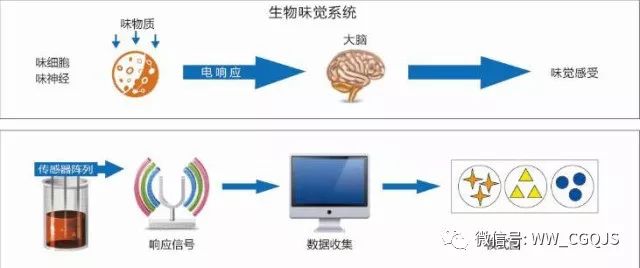
The biological taste sensor is composed of a sensitive component and a signal processing device. The sensitive component is further divided into a molecular recognition component and a transducer. The molecular recognition component is generally composed of a biologically active material such as an enzyme, a microorganism, and a DNA.
The multi-channel taste sensor is made up of a multi-channel electrode formed by a lipid film, and the multi-channel electrode is connected to the multi-channel scanner through a multi-channel amplifier, and the electronic signal obtained from the sensor is converted into a digital signal by a digital voltmeter, and then sent to a computer. deal with. The chemical sensor of the single-walled carbon nanotube composite film based on gel polymer is used to measure the frequency response of the sensor in different liquids by impedance method. Finally, the data is identified by principal component analysis method, and the acid is better. Sweet, bitter, salty and other flavors.
Application of Electronic Tongue Technology in Alcohol Recognition
Russia has long been engaged in the research of electronic tongues in wine discrimination and quality evaluation methods. Using an electronic tongue consisting of 30 sensor arrays to detect different mineral waters and wines, all samples can be reliably distinguished. Repeatability was good, and there was no significant change in the measurement results after two weeks. The 33 brands of beer were tested, and the information collected by the electronic tongue clearly reflected the taste characteristics of various beer. These samples do not need to be pretreated, so this technology can meet the requirements of on-line inspection of the production process. In 2005 he studied the electronic tongue based on voltammetric electrochemical sensors to distinguish vodka, alcohol and brandy. This electronic tongue system can detect the presence of contaminants in vodka, and can judge whether its content exceeds national safety standards. It can also identify ten specifications from the same manufacturer, different purity and different additives. Vodka can distinguish between synthetic alcohol and grain-brewed alcohol, as well as their different grades. In addition, he used this electronic tongue to distinguish between several different brandies, including freshly brewed and aged wines, wines produced by different distillation methods, and even wines made from different oak barrels. It can be seen that electronic tongue detection is a promising analysis method for quickly evaluating wine quality.
The evaluation of the quality of rice wine is mainly based on three factors: taste, aroma and color, and the evaluation of taste is the most difficult of the two. Satoru Liyama et al. used a taste sensor and a glucose sensor to detect the quality of Japanese rice wine, which consists of eight lipid membrane electrodes. Principal component analysis was used to identify the pattern and reduce the dimension. Finally, the two-dimensional signal map was shown, which represented the titration acidity and sugar content. The signal output value of the electronic tongue has a great correlation with the titration acidity and sugar content. Thus, a mathematical model was made for the sweetness prediction of rice wine.
Application of electronic tongue technology in dairy industry

Raw milk from different sources has different qualities, so distinguish them. F Winquist's research shows that the Voltammetric electronic tongue can be used to monitor raw milk entering the plant. These raw milks come from different farms or farmers and need to be placed in a storage tank during transportation. The contamination of individual raw milk can lead to large-scale raw milk contamination. Therefore, the detection of unqualified raw milk is an important part. Unqualified raw milk includes acidified, salty, odorous, odorous, oxidized, rancid, and chemically residual raw milk. In addition, the milk produced by different feeds (such as non-dried grass, alfalfa, hay) is also different, and the quality of the raw milk is seasonal. The electronic tongue can be used to quickly detect raw milk and unqualified raw milk from all sources, which is a very meaningful safety test.
Auditory and visual sensor
The auditory sensor mainly refers to speech recognition, which converts the sound signal into a corresponding electric signal through a detection conversion circuit, and then recognizes it by signal processing. Typical models of integrated circuits that implement speech recognition include TMS320CSOPQ and TMS320CGBL. A typical application of an auditory sensor is to enable a robot to achieve a "human-machine" dialogue. A vision sensor is a collection of thousands of pixels from the entire image. The image is processed to detect the shape, position, orientation, and brightness of the object. It includes position sensor and color sensor, mainly realized by TV camera and computer technology. The presence or absence of the object is detected by the color sensor, and the position and shape characteristics of the object are determined by the position sensor. Finally, the object feature is extracted and recognized by computer processing. The proximity sensor is a special type of vision sensor that only senses the distance information and determines the object characteristics based on the distance information.

Tactile sensor
The sense of touch is also being artificially simulated for the development of artificial haptics. Researchers at the University of Illinois in the United States have developed a hair-like tactile sensor. Many animals and insects can use their hair to distinguish many different things, including direction, balance, speed, sound and pressure. The artificial hair is made of glass and polycrystalline silicon which are well-performed and etched from the silicon substrate by a photolithography process. This large array of artificial hairs can be used on space probes, and its ability to detect the surrounding environment far exceeds any of today's existing systems, and NASA is actively participating in this research. The biggest challenge for such sensors is the amount of data generated. To circumvent this problem, the researchers first studied and imitated the work of human tactile systems. Each finger has about 200 nerves, and there are intricate skin textures, so the amount of data it produces is so difficult to handle. But because the skin's elasticity is like a low-pass filter that filters out some fine details, it makes the brain's treatment simple and feasible. Researchers are using bionic technology to solve the problem of excessive amounts of artificial hair data.
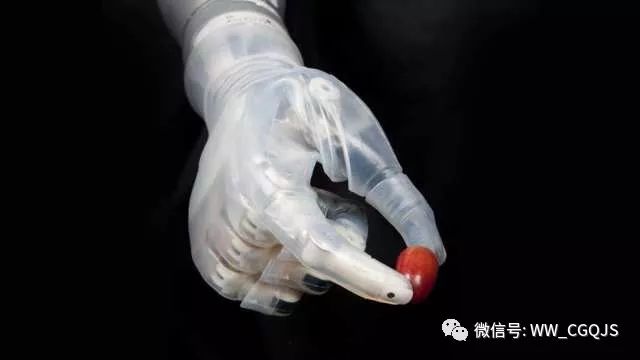
biological sensor
Biosensors are formed by coupling a bio-sensitive membrane on a basic sensor. They are a special type of sensor that uses biologically active units (such as enzymes, antibodies, nucleic acids, cells, etc.) as biosensing units. Highly selective detector. Biosensor is a high-tech that has been infiltrated by various disciplines such as biology, chemistry, physics, medicine, and electronic technology. Due to its high selectivity, high sensitivity, fast analysis speed, low cost, and continuous online monitoring in complex systems, especially its high degree of automation, miniaturization and integration, it has been obtained in recent decades. Vigorous and rapid development. It has broad application prospects in various sectors of the national economy such as food, pharmaceutical, chemical, clinical testing, biomedicine, and environmental monitoring. The research and development of biosensors has become a new hot spot in the development of science and technology in the world. It is an important part of the emerging high-tech industry in the 21st century and has important strategic significance.
How biosensors work
The biosensor consists of an identification component and a signal converter.
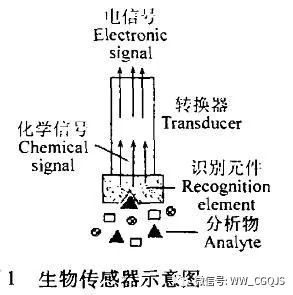
Identifying the target to be measured by the molecular recognition part is the main functional element that can cause some physical or chemical change. The molecular recognition moiety is the basis for the selective determination of biosensors. Transducers are another important part of developing high quality biosensors. Corresponding changes occur in the generation or consumption of light, heat, and chemicals in sensitive components. Based on these variations, an appropriate transducer can be selected.

In the above figure, the sensitive substance of the biosensor is attached to the biological membrane (or in the membrane), and the information to be measured in the measured solution is diffused into the bio-sensitive membrane layer, and the information generated by the molecular recognition or biological reaction is generated. It can be converted into a quantifiable and displayable electrical signal by corresponding chemical or physical principles. The composition or concentration of the measured substance can be known through the analysis of the electrical signal. The biofunctional membrane of the biosensor acts as a molecular recognition function, which determines the sensor's Selective.
Biosensor classification
According to the molecular recognition component in the biosensor, that is, the sensitive component can be classified into five types: an enzyme sensor, a microbial sensor, a cell sensor, a tissue sensor, and an immunosensor. Obviously, the sensitive materials applied are enzymes, microbial individuals, organelles, animal and plant tissues, antigens and antibodies.
According to biosensor transducers or signal converters, there are: bioelectrode sensors, semiconductor biosensors, photobiosensors, thermal biosensors, piezoelectric crystal biosensors, etc., and the transducers are electrochemical electrodes, semiconductors, and photoelectric conversions. , thermistor, piezoelectric crystal, etc.
Bio-affinity biosensors are classified according to the manner in which the target is interacted with the molecular recognition element.
The above three biometric sensor classification methods are used interchangeably in practical applications.
Learning from nature and learning from the human body is the eternal theme of bionics, and it is also the development direction of bionic sensor technology. Our current work is to study biomimetic sensors based on biological and chip-binding technologies, such as integrated array chips for olfactory and taste cells, which makes it possible to study the response of olfactory and taste and the mechanism of nerve conduction at the cellular and molecular levels. The development of bionic artificial olfactory and artificial taste provides new technical means. At the same time, the cell chip technology can also be used to study the nerve conduction mechanism and model of the biomimetic sensor, as well as the dynamic real-time detection of the response process of the sensory cells.
At present, although many biomimetic sensors have been successfully developed, the stability, reproducibility and mass production of biomimetic sensors are obviously insufficient. Therefore, the biomimetic sensing technology is still in its infancy, so in the future, a new series of biomimetic sensors will be developed. In addition to the existing series, the immobilization technology of bioactive membranes and the solidification of biomimetic sensors deserve further study. In the near future, olfactory, gustatory, auditory, and tactile bionic sensors that mimic biological functions will emerge, potentially surpassing the human facial features, improving the current robot's visual, taste, tactile, and ability to operate on objects. We can see the broad prospects of bionic sensor applications, but these require further development of biotechnology, we will wait and see.
Right Angle D-sub Connector IP66 IP67 Rated
IP66 / IP67 waterproof d-sub connectors-Designed for IP Performance
ANTENK has developed IP66 / IP67 waterproof d-sub connectors that utilize a proprietary sealing technology, which maintains the same physical size and footprint as standard d-sub products.
Antenk's line of Waterproof d-sub connectors utilize an innovative sealing technology eliminating the need to redesign enclosures and PC boards when implementing IP67 design upgrades.These connectors are designed for applications that require protection from heavy spray or are exposed to short-term submersion. Connectors are available in vertical and right angle board mount types as well as solder cup for panel mount cable applications. Standard D-Subs are available in 9 pin, 15 pin, and 25 pin positions, and high density D-Subs are available in 15 pin, 26 pin, and 44 pin positions
Applications of Antenk waterproof d-sub connectors:
Hand held computers, scanners, and printers that are used outdoors
Remote sensors, gauges, and data loggers that are used outdoors
Industrial and Medical equipment that is routinely subject to wash down
Transmitters and emergency beacons that are subject to temporary submersion
Gas, Electric, and Water metering systems that have embedded Smart Grid electronics
Portable electric generation equipment (Gen Sets)
Consumer and Commercial boating electronics (Radios, Scanners, Radar, DC Power Ports)
IP67 D-SUB | WATERPROOF CONNECTORS FEATURES & BENEFITS
Signal / Low Power in 6 standard size
(Standard: 9 pin, 15 pin, 25 pin; High Density: 15 pin, 26 pin,44 pin)
Combo-D / High Power in a variety of configurations:
(3W3, 5W5, 7W2, 9W4, 11W1, 13W3, 13W6, 17W2, 21W1, 21WA4)
Solder Cup, Vertical Mount & Right Angle Board Mount Options
High Reliability Screw Machined Contacts
3 amp / 5 amp / 20 amp / 40 amp Power Options
-65°C to +105°C Operating Temperature Range
Right Angle D-SUB Connector IP66 IP67 Rated available in
3 industry sizes/positions:Standard Density (9 pin, 15 pin, 25 pin).
Male & Female Versions
Right Angle D-sub Connector IP66 IP67 Materials
Shell: Steel with Nickel Plating.
Insulator: Glass-filled thermoplastic. U.L. rated 94V-O
(260° process temp for board applications)
Machined Contacts:
Male Pins - Brass
Plating: Gold Flash on entire contact.
IP67 Right Angle D-Sub Seal: Proprietary Information
Right Angle D-Sub IP67 Rated,Right Angle D-Sub Waterproof,Standard Density Waterproof Right Angle D-Sub Connector, High Density Waterproof Right Angle D-Sub Connector
ShenZhen Antenk Electronics Co,Ltd , https://www.antenkelec.com
